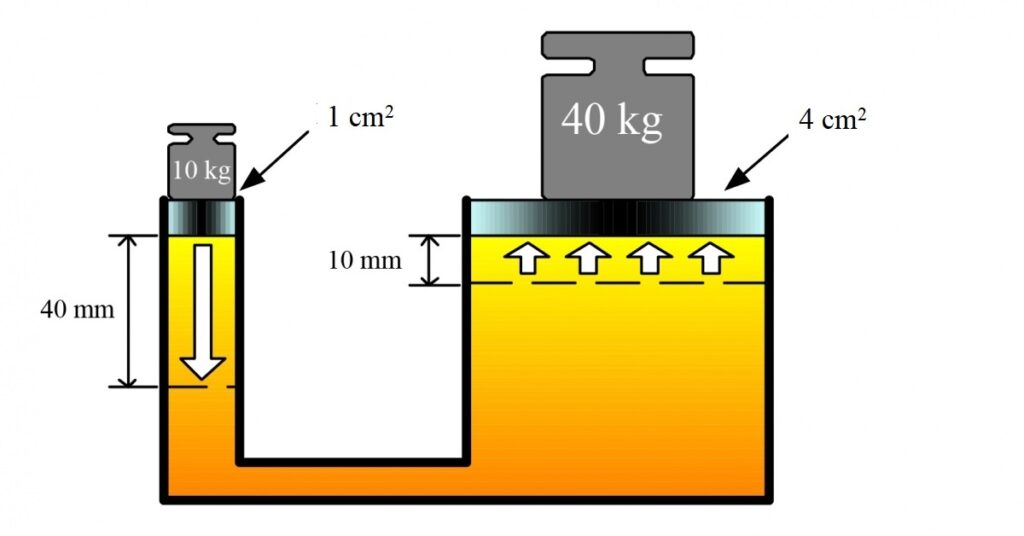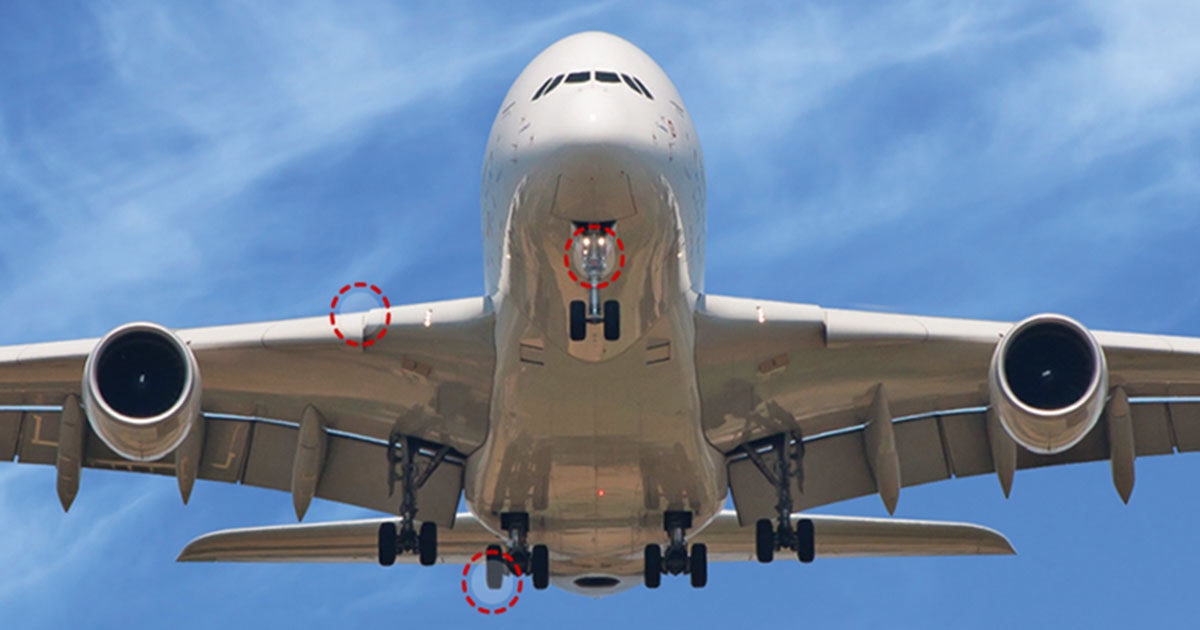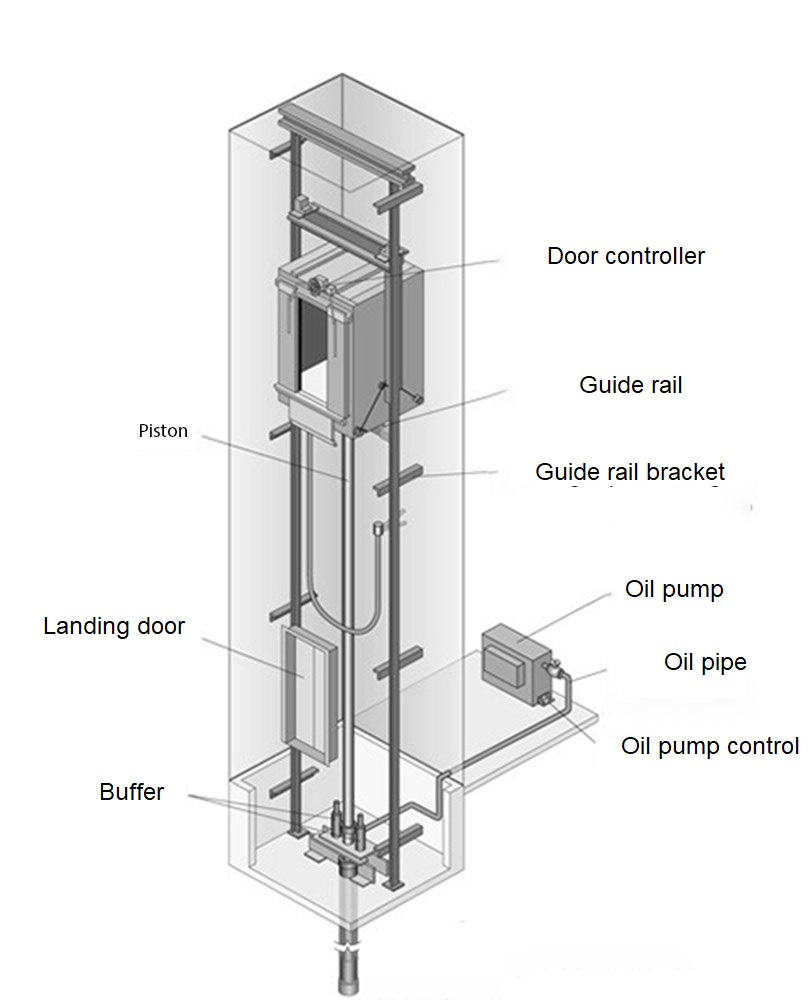EM – Hydraulic technology or hydraulic elevators have gradually become popular, but do you know why hydraulic technology is considered the most superior technology? Let’s find out with Elevator Magazine.
Hydraulic systems transmit energy using the pressure of an incompressible fluid in a closed system. Usually, this incompressible liquid will be oil. In every basic design of a hydraulic system there will be 2 pistons connected to a common cylinder. While applying pressure to any piston, the fluid moves through the cylinder and enters the second piston. The principle behind this hydraulic system concept is Pascal’s law (F = P x A, where F is the force applied, P is the pressure transferred and A is the cross-sectional area)

Example of the principle of hydraulic technology according to Pascal’s law
Applications of hydraulic systems are everywhere. Hydraulic systems are used in lifting equipment (hydraulic jacks, wheelchair lifts), hydraulic presses (for automobile crushers), aircraft, boats, brake and power steering systems of cars, trucks, elevators, etc. In airplanes, hydraulic systems are used to move and launch landing gear, wing flaps and brakes, flight control, wings, thrust reversers, etc. can all apply hydraulic technology. In ships, the main part using hydraulic technology is the branch and rudder.
The biggest advantage of hydraulic power is arguably its energy density. Hydraulic components can convert and transmit power with a relatively smaller space consumption than any existing technology. This has great implications for the area of the device and the size of the machine. For a given mass of matter, both the ability to develop force in a linear hydraulic actuator or the torque in the hydraulic motor is many times larger. As a result, hydraulics continues to be the technology of choice for these heavy-duty applications.
Some people also call hydraulics the “muscular power” of any construction equipment because they play an important role in operating the equipment and performing its functions such as digging, shoveling, loading and unloading, etc. The biggest advantage of hydraulic technology is high output force, precise control with basic components and fluid circulation to ensure heat removal (limiting the possibility of machinery explosion). Together, hydraulic pressure can be transmitted over long distances and through complex machine configurations with very little energy loss. Hydraulic technology is also appreciated for multi-function control – a single hydraulic pump can power multiple cylinders, motors or other actuators.
Hydraulics are widely used nowadays because they can efficiently transfer power or electricity to remote locations with few moving parts and high efficiency. It is known for being an easy, flexible system with high speed movements. Some other advantages that can be mentioned are:
The hydraulic system is easy to control and precise. Because the system operator can easily start, stop, accelerate and decelerate the system with simple levers and push buttons.
Using hydraulic power that can be transmitted through flexible, variable lines.
– Hydraulic components allow micro speed changes.
– Minimize unwanted noise.
Although there are many outstanding advantages compared to other transmission technologies, hydraulics still have its limitations, including:
From the above disadvantages, it can be concluded that the problem of dealing with differential pressure without causing leakage is the biggest challenge of using hydraulic technology, which is directly related to the design and construction process. Manufacturing these devices requires precise calculations and production that meets quality standards. In addition, after completing the engine system using hydraulic technology, maintenance is also extremely important.
From the outstanding advantages, hydraulic technology has been widely applied in the machinery system, especially the equipment requiring a high level of safety. In particular, the outstanding application of hydraulic technology is in lifting and lowering equipment such as aircraft, shipbuilding, elevators, cranes, etc.
Plane:
Aircraft, military aircraft and helicopters all use hydraulic applications because of their cost-effectiveness, ease of maintenance, and operational efficiency. Hydraulics are an integral part of every aircraft because of its safety, speed and energy efficiency. Most importantly, the ability to start and accelerate quickly can only be achieved by using hydraulics, unlike electric and pneumatic transmission systems. In addition, the small and lightweight design of the hydraulic system improves efficiency and reduces emissions. Turrets (military aircraft), autopilot, shock absorption systems, landing gears, flaps, doors and hatches, brakes, bomb bay doors, etc. are some of the hydraulic applications in aircraft.

Some positions of hydraulic technology application on aircraft
Shipbuilding industry:
The shipbuilding industry is a heavy industry, so the application of hydraulic systems is used even more. Ship machinery faces a lot of challenges both on land and in water. Choosing equipment that uses hydraulic technology is the best in class and provides the safety and performance needed to keep your equipment in optimal condition. Connectors, hoses, hydraulic motors, hydraulic pumps, etc. on ships are all applications of hydraulic technology.

Hydraulic motor with low speed and high torque for shipbuilding applications
Hydraulic lift:
This is considered a great feat of engineering.
One of the greatest inventions of the 19th century has to be the elevator. Currently, we have different types of elevators: traction lifts, screw lifts, vacuum lifts and hydraulic lifts. Each type of elevator has its own advantages and disadvantages.
How hydraulic lifts work: The lifting mechanism of hydraulic elevator uses an electrically powered pump that pushes pressurized liquid into a jacked lifting system. Pistons in a cylinder at the base of the elevator then power the elevator up and down.

Model of an elevator using hydraulic technology



